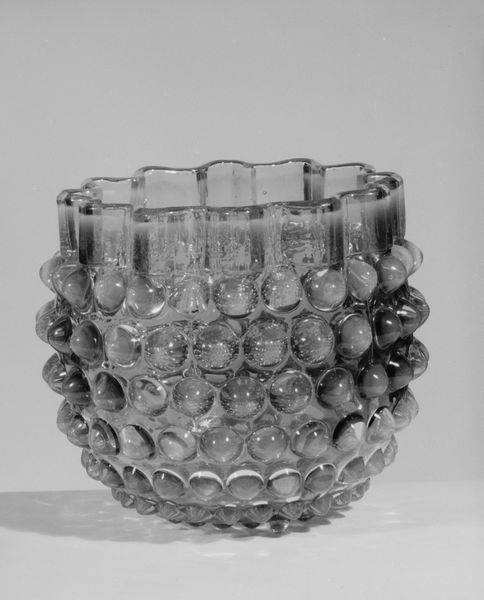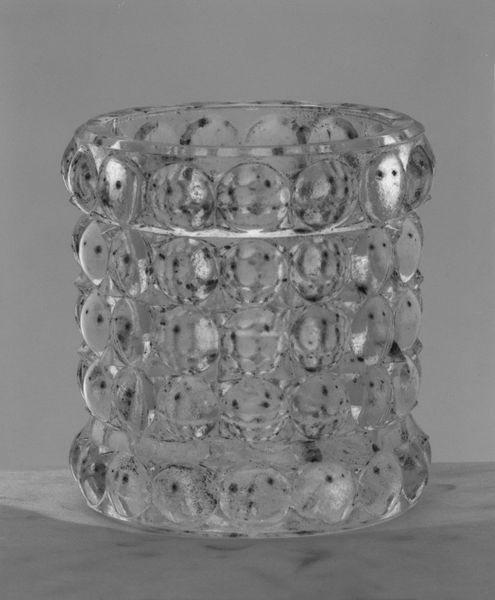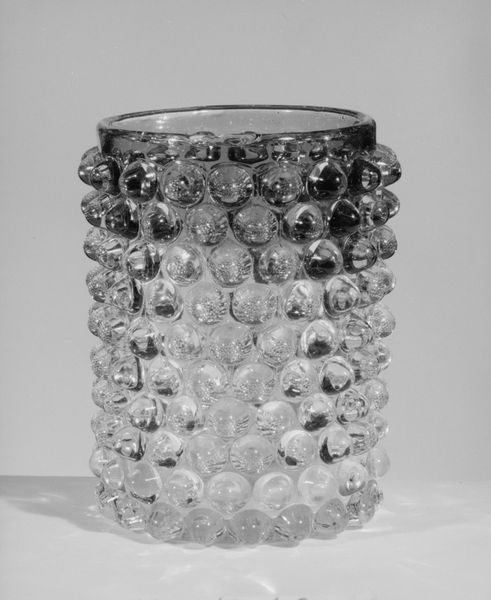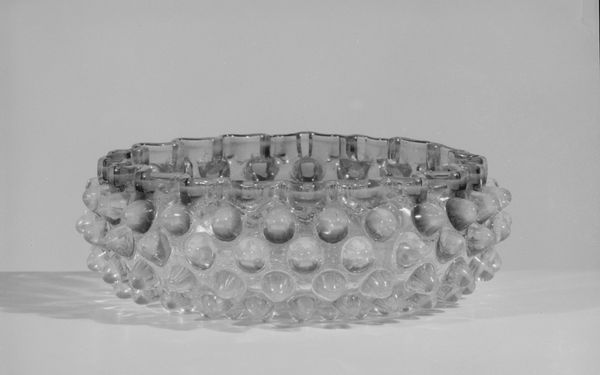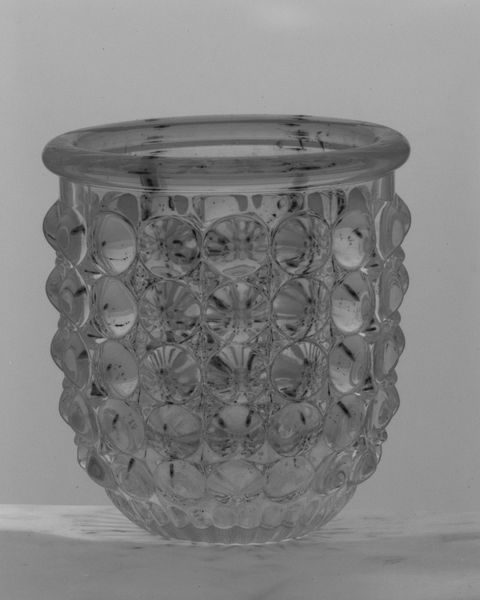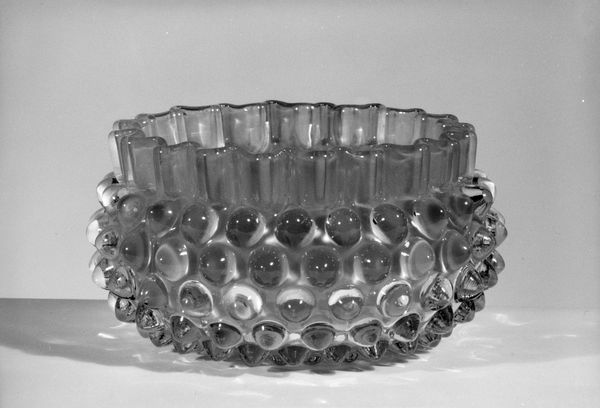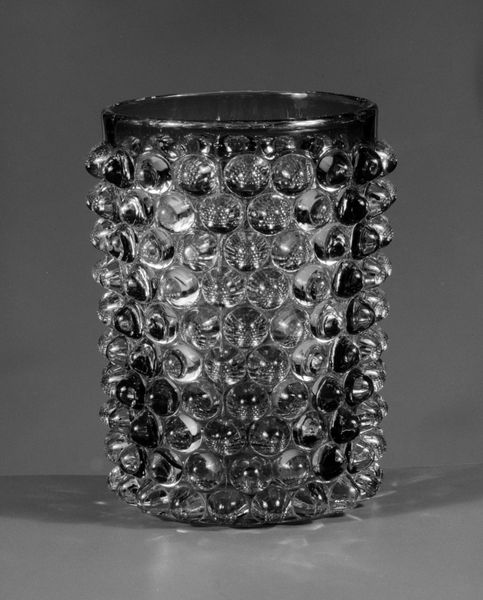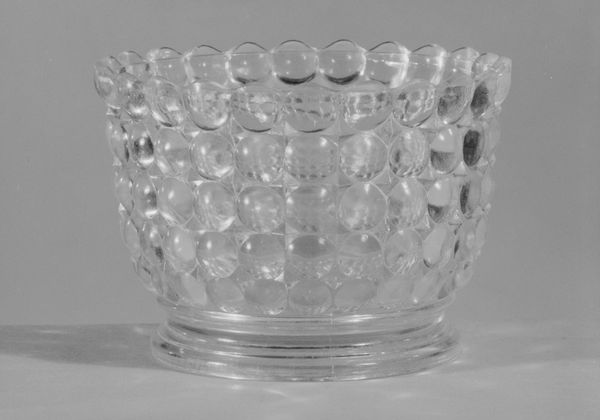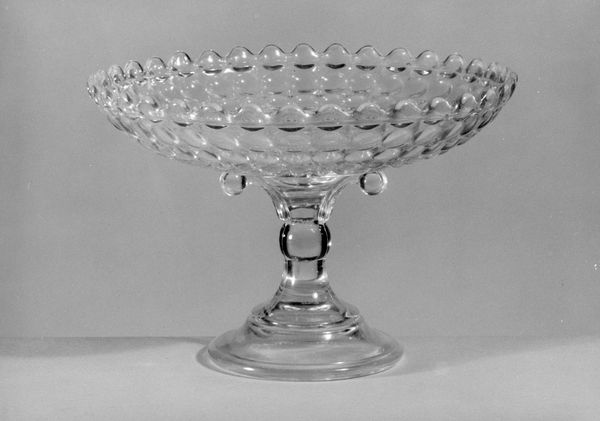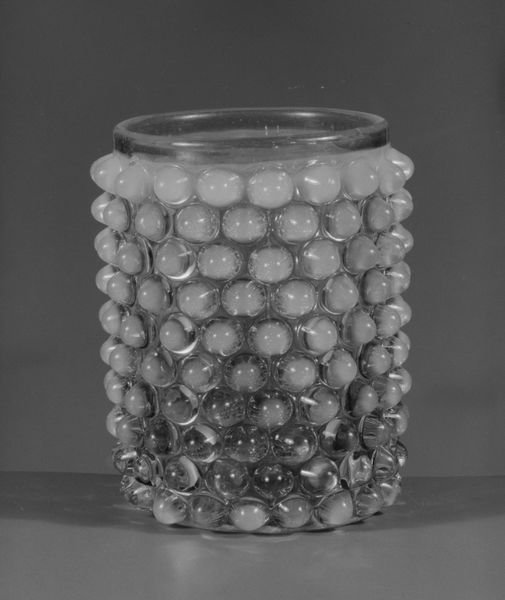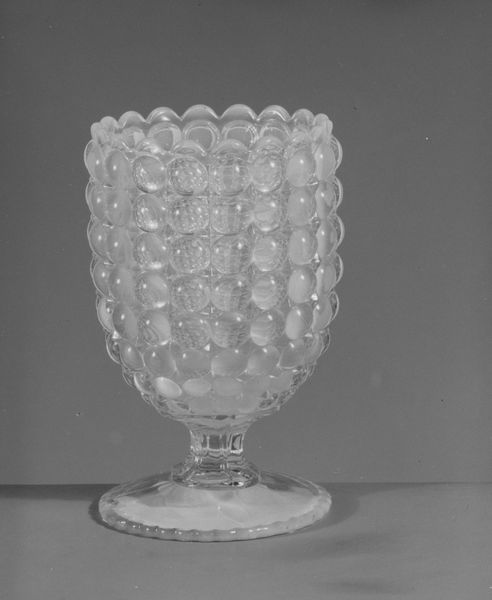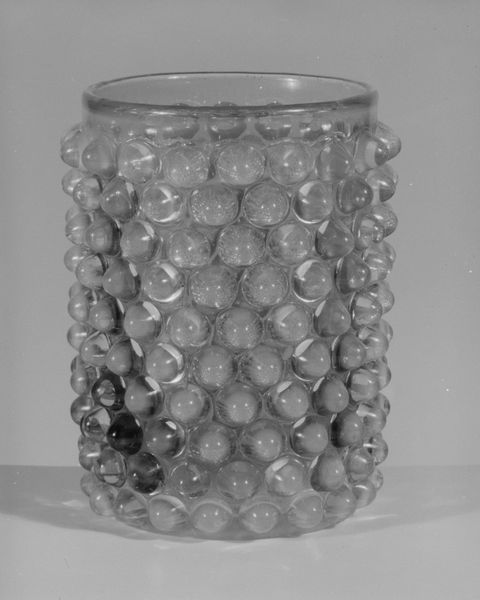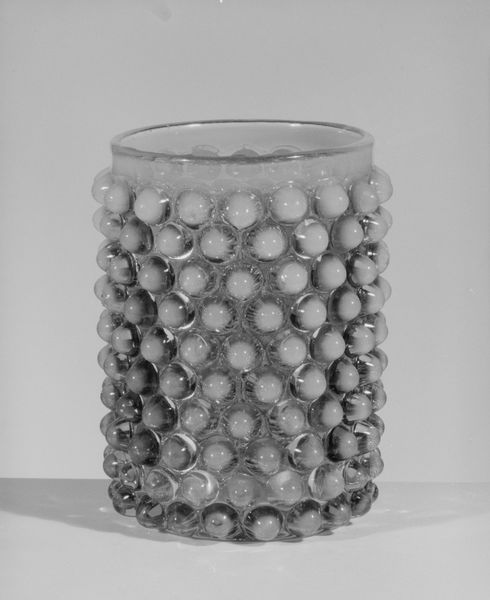
glass, sculpture
#
glass
#
geometric
#
sculpture
Dimensions: H. 2 1/2 in. (6.4 cm); Diam. 4 9/16 in. (11.6 cm)
Copyright: Public Domain
Editor: Here we have a “Hobnail Finger Bowl,” crafted between 1887 and 1896 by Hobbs, Brockunier and Company. It's made of glass, and what strikes me is the texture—all those raised circles. It's sort of prickly to look at, almost organic like a sea creature, yet undeniably geometric. What do you make of it? Curator: Ah, yes, it's a fascinating little universe in glass! To me, it whispers of the Victorian era's fascination with both scientific discovery and elaborate ornamentation. I imagine it gracing a lavish table, each facet catching candlelight, like a miniature disco ball. The 'hobnail' pattern was incredibly popular then; it spoke to a desire for tactile richness in everyday objects. Don’t you feel a kind of delicious tension between the smooth transparency of the glass and the almost aggressive texture of those hobnails? Editor: I do. It's beautiful but not exactly inviting. What was a finger bowl actually used for? Curator: A finger bowl was part of an elaborate place setting! Often used after messy courses, so you could freshen up a little. Imagine lemons or rosewater afloat. Thinking about it now, there's an absurdity in crafting something so functional out of something so...precious? What I mean to say is that its like adding insult to luxury, doesn't it evoke that same feeling as Marie Antoinette? Editor: It really does! All that detail for something so…mundane. I never would have considered that contrast. Thanks! Curator: My pleasure! It always tickles me to remember how even the smallest objects can echo the grandest historical themes.
Comments
No comments
Be the first to comment and join the conversation on the ultimate creative platform.
